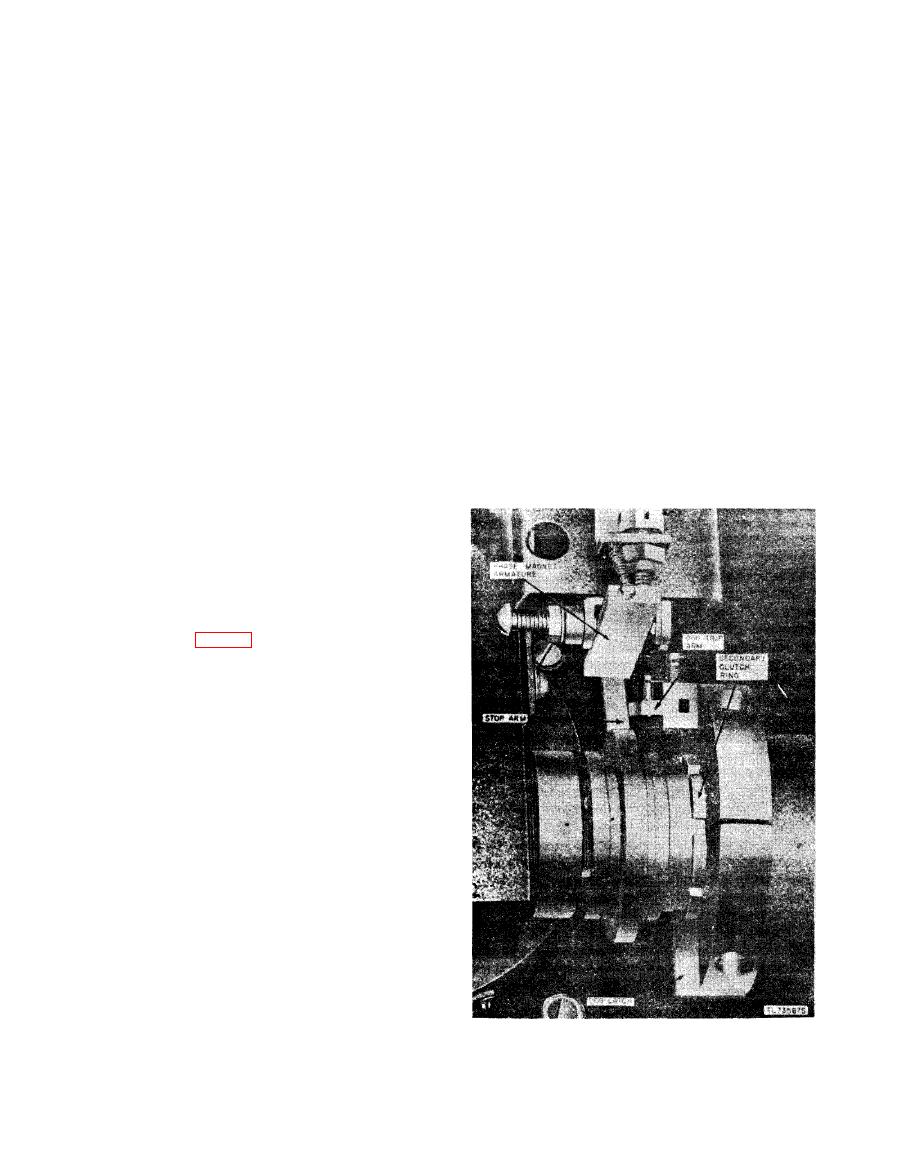
not break in to ask the transmitting operator
switch and hold it engaged until the
for more phasing pulses, it may be possible to
motor starts and the drum picks up speed
phase the receiving machine as follows. Watch
to slightly more than 60 rpm. Release
the DB METER for the periodic pips that
the switch. The drum will slow down to
occur once each second, representing the pulses
its synchronous speed at 60 rpm.
sent when the transmitting machine scans the
clamp bar. Gradually stop the drum so that
the clamp bar is facing the stylus or recorder
Transceivers TT-1B/TXC-1, TT-1C/
lamp barrel by applying pressure with the
T X C - 1 , TT-1D/TXC-1, TT-1E/TXC-
fingers. Release the drum in synchronization
1, and TT-1F/TXC-1 may run at a non-
with the pips observed on the DB METER.
synchronous speed. It is at synchronous
There is a good chance that the drum will be
phased properly and a suitable picture will be
speed only when the 1,800-cycle tone can
recorded.
be heard from the motor laminations.
If the drum stops, repeat the starting
d. Receiving Copy.
operation.
(1) If the receiving transceiver is phased
The transmitting operator will send ap-
properly, wait for transmission of the
proximately 25 phasing pulses. These
picture signals to start. When these
are indicated at the receiver by a momen-
signals start, as indicated by irregular
tary dip on the DB METER which
fluctuations of the DB METER, engage
occurs once for each revolution of the
the drum to the feed mechanism- b y
drum. Be sure to wait for 10 to 15
pulling the feed engaging lever forward,
pulses during which the transmitting
turn the selector switch to RECORD
machine comes into proper phase; then
operate the PHASE switch and hold it
engaged for about 6 to 10 pulses. The
phasing pulses actually bring the stop
arm on the clutch mechanism into phase,
and from 5 to 10 more revolutions of the
stop arm may be required before the drum
falls into phase. The drum is not phased
until the stop arm is driving the dog trip
arm (figs. 18, 19, and 20). When using
Facsimile Transceivers TT-1/TXC-1 and
TT-1A/TXC-1, which have not been
modified according to MWO SIG 11-
2258-2, check for this condition by look-
ing at the clutch mechanism through the
window on the clutch housing. If the
drum is not being driven by the stop
arm driving the dog trip arm after 10
revolutions following the release of the
PHASE switch, exert a gentle friction
with the fingers against the phasing ring
on the drum until the stop arm catches
up with the dog trip arm. Modified
Facsimile Transceivers TT-1/TXC-l and
TT-1A/TXC-1 and Facsimile Trans-
ceivers TT-1B/TXC-1, TT-1C/TXC-1,
T T - 1 D / T X C - 1 , TT-1E/TXC-1, and
TT-1F/TXC-1 have a drum friction
mechanism which automatically phases
the drum.
Note. If the receiving operator misses the
phasing pulses and is on a circuit where he can-
35


